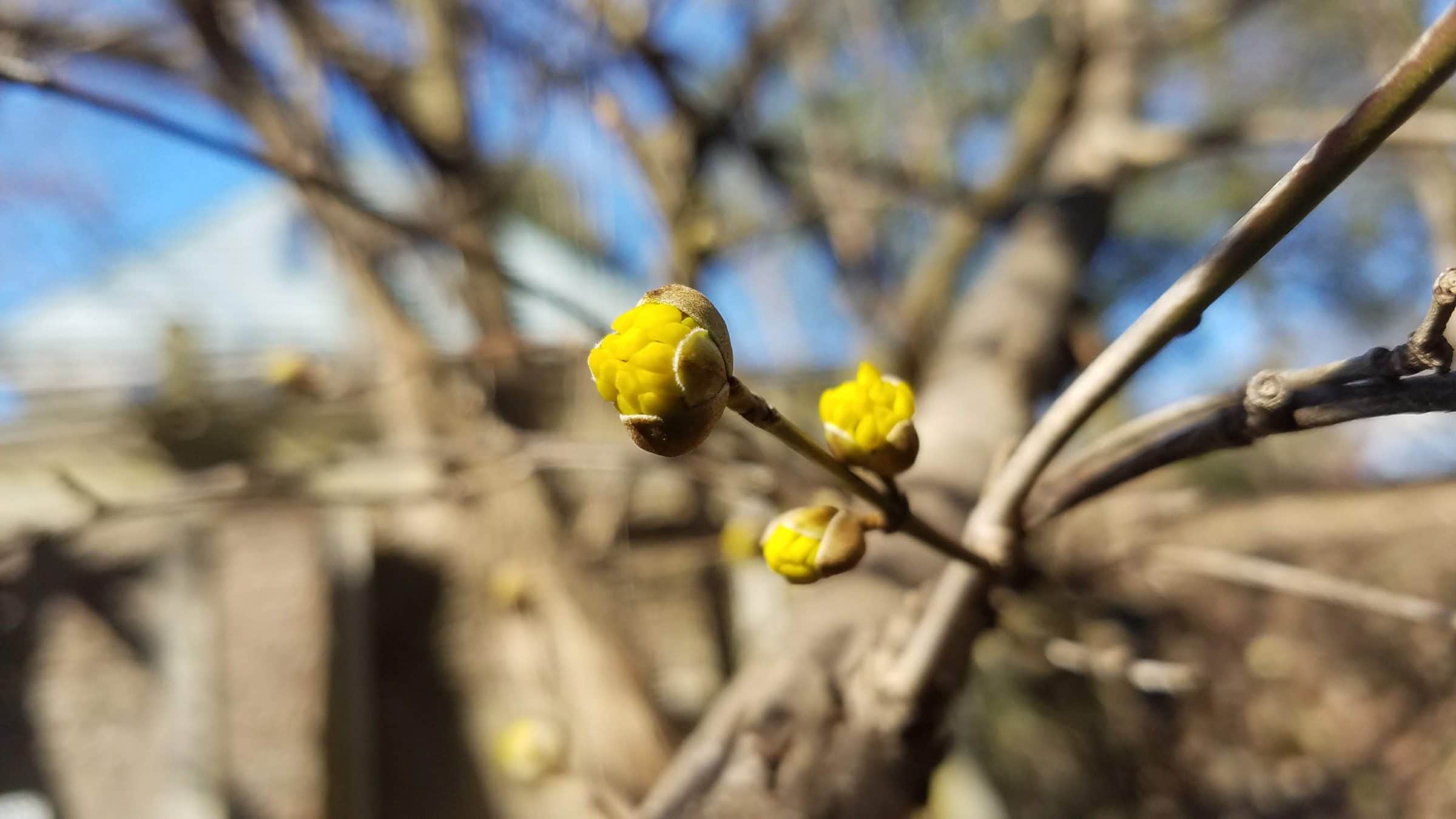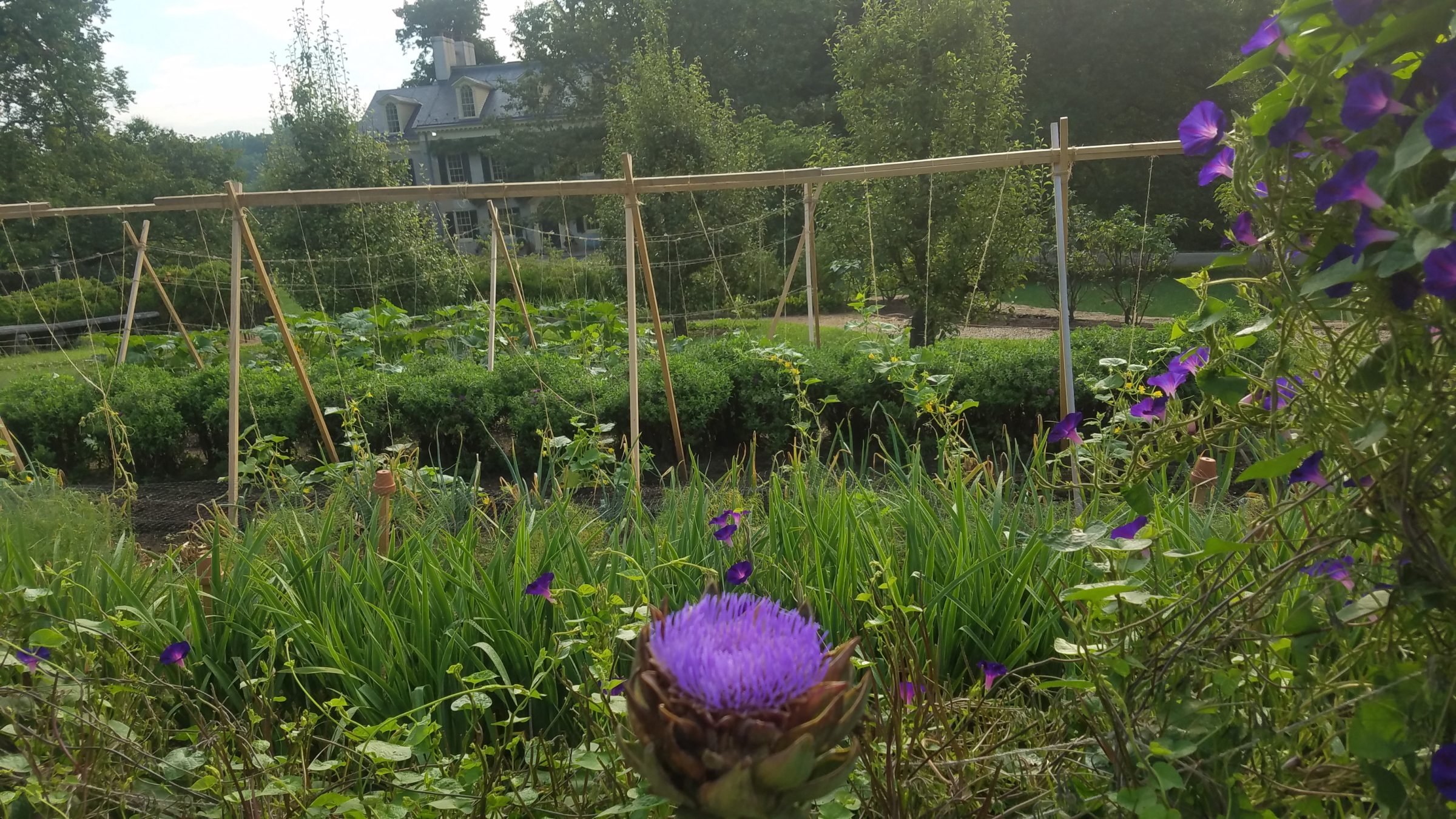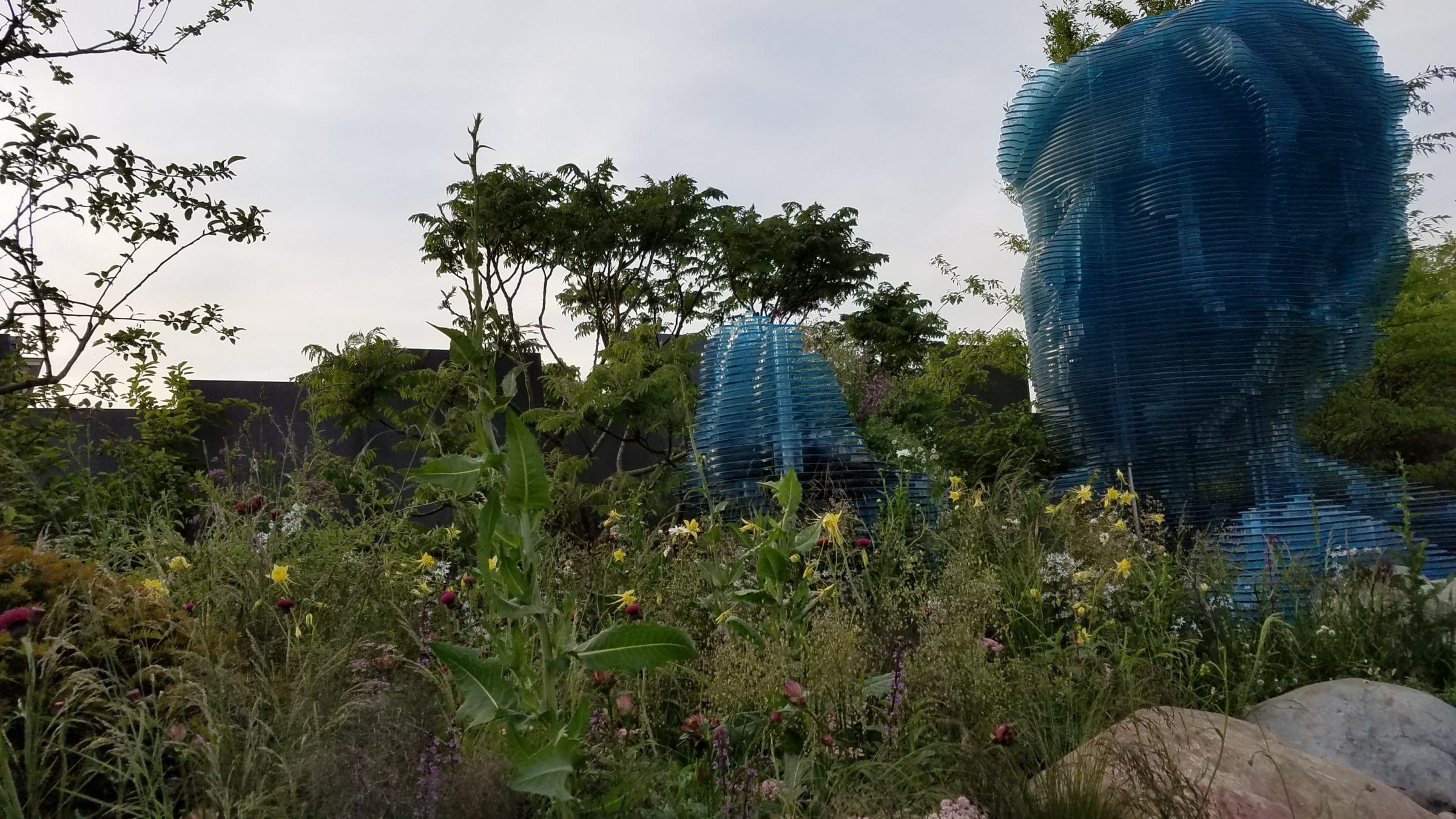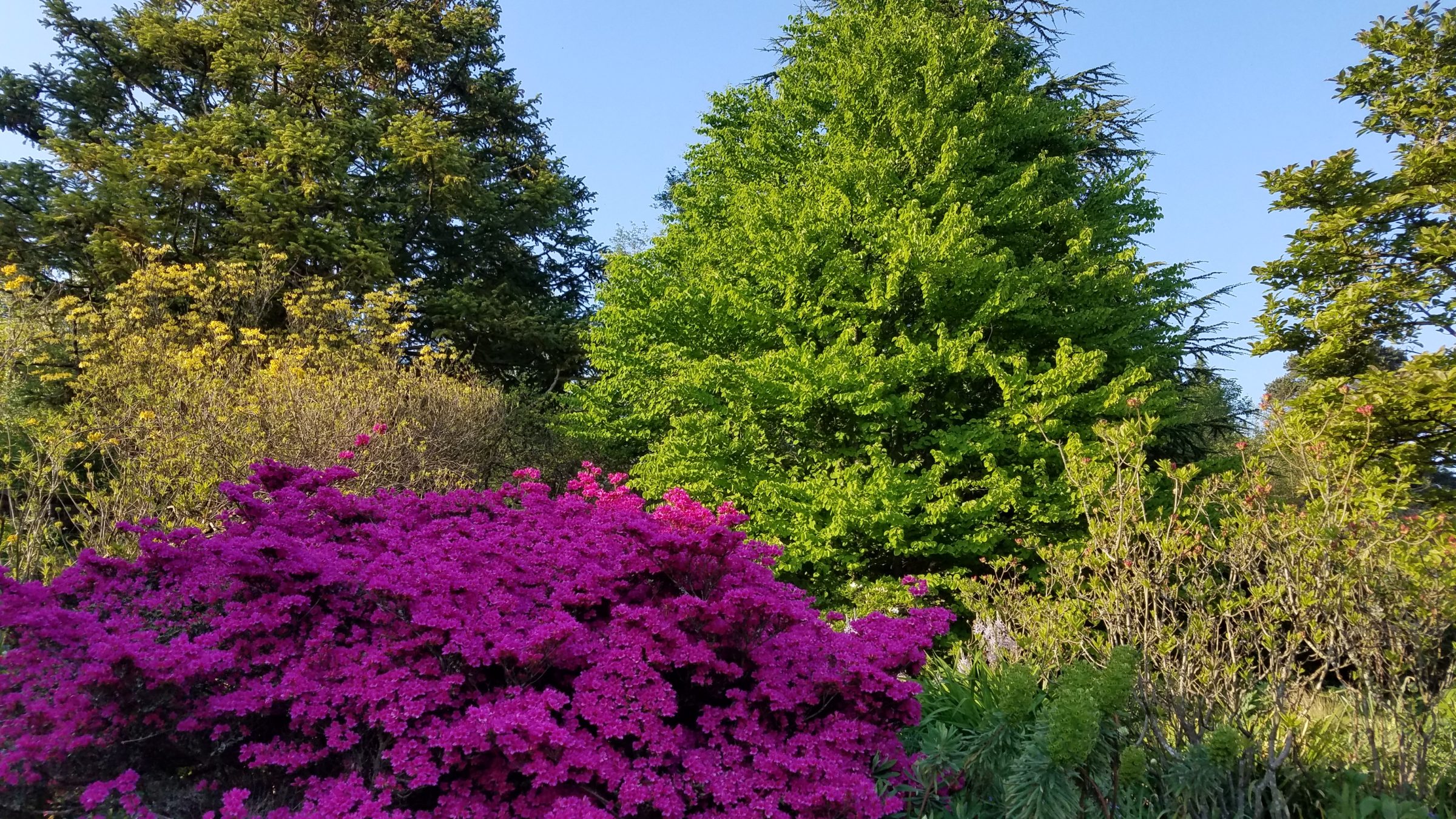
Cornelian Cherry – Cornus mas
Story
Before you go planting that Forsythia everyone in the neighborhood has, consider another early spring yellow flowering shrub, the Cornelian Cherry. Cornus mas will provide some diversity to your spring planting scheme with long-lasting blooms from late February until mid-April. It’s long been cultivated in Eastern Europe and Asia for its tart cherry-like fruit.

The ancient Greeks used the fruit as far back as 7,000 years ago to make syrup, jam, jelly, wine, and baked goods. “Homer refers (Odyssey K. 242 cited by Kavadas 1956) that cornelian cherry fruits were given as food for pigs. Theofrastus refers to the Cornelian cherry fruit as kranion (Plant history 3, 3,1 and 4,4,5).” – C.Gr. Tsipouridis It has fallen out of favor in modern society due to the difficult harvest. Its elongated pit clings to the fruit and the fruit ripens over a long period of time, requiring multiple harvests.

Description
Cornus – Latin for horn, in reference to the toughness of the wood.
mas – Masculine; early writers used this designation in a metaphorical sense to differentiate between various traits of a masculine or feminine nature.
Family – Cornaceae
Nativity – Central and South Europe / West Asia
Hadriness – USDA Zones 4-8
Form – Large woody deciduous shrub or small tree reaching heights of 30′ if left unchecked. Multi-stemmed, suckering from the base with an oval crown and low branching structure.
Foliage – Opposite branching with simple leaves, entire margins, 2-4″ long, ovate to elliptic, pointed apex. Variable purplish fall color. Cornus genera foliage has fine white strands between the venation when broken, making it a good identification characteristic.
Buds – Valvate, yellow to green, on short stalks.
Flower – Yellow flowers borne on short stalks bloom in March before the foliage flushes out. Produced in rounded umbels 3/4″ wide with yellow bracts.
Bark – Exfoliating and scaly light brown to reddish bark develops on mature specimens.
Fruit – Edible drupes, fleshy one-seeded berries that mature to cherry-red in mid-summer.

Flowering umbels 
Branching habit 
Flower buds bursting 
Umbel with bracts 
Habit 
Valvate bud scales
Culture
Cornus mas is a fairly easy plant to grow as it will tolerate most soil types. If it had a choice the Cornelian Cherry would grow in well-drained, calcareous soils of temperate regions in Europe and West Asia. It can brighten up a semi-shady area as it can grow under the shade of tall trees. However, you might notice a more elongated habit if the area is too shady. A sunny location will produce a more compact and floriferous plant.

Branching habit 
Umbel with bract 
Foliage and flower buds 
Suckering habit 
Spread
Root suckering at the base is common with these plants and will require pruning on single specimens. However, the suckering and layering habit of the Cornelian Cherry makes it an excellent candidate for hedges and screens. Their tough exfoliating bark will tolerate deer rubbing and the soil adaptability will further increase your chances of growing healthy plants that will thrive into their old age. In addition, Cornus mas has excellent tolerance against dogwood anthracnose and dogwood borer.
Design
In need of late winter and early spring flowering woody that will knock your socks off with its vibrant yellow blooms? The typical solution for this design challenge is to use the commonly planted Forsythia. Although they do have their merit and purpose in the landscape, the Cornelian Cherry can serve some of the same functions and add diversity to the garden.
The Cornelian Cherry is an excellent addition to any late winter or early spring garden theme due to similar bloom times and functions as the boring forsythia. A hedge may be created from either, with the wispy forsythia lending itself to a more naturalistic landscape, while the Cornelian Cherry hedge is more conducive in a formal setting.
A great addition to a late winter garden as a foundation specimen or grouped in a shrub border. This shrub will naturalize in a woodland setting if left unchecked.
**Other yellowing spring flowering shrubs to consider :
– Chimonanthus praecox
– Corylopsis spicata
– Hamamelis x intermedia
References
National Agricultural Research Foundation – Pomology Institute (NAGEF-PI) – http://www.ueresgen29.unifi.it/ds10.htm
https://www.missouribotanicalgarden.org/PlantFinder/PlantFinderDetails.aspx?kempercode=c290





